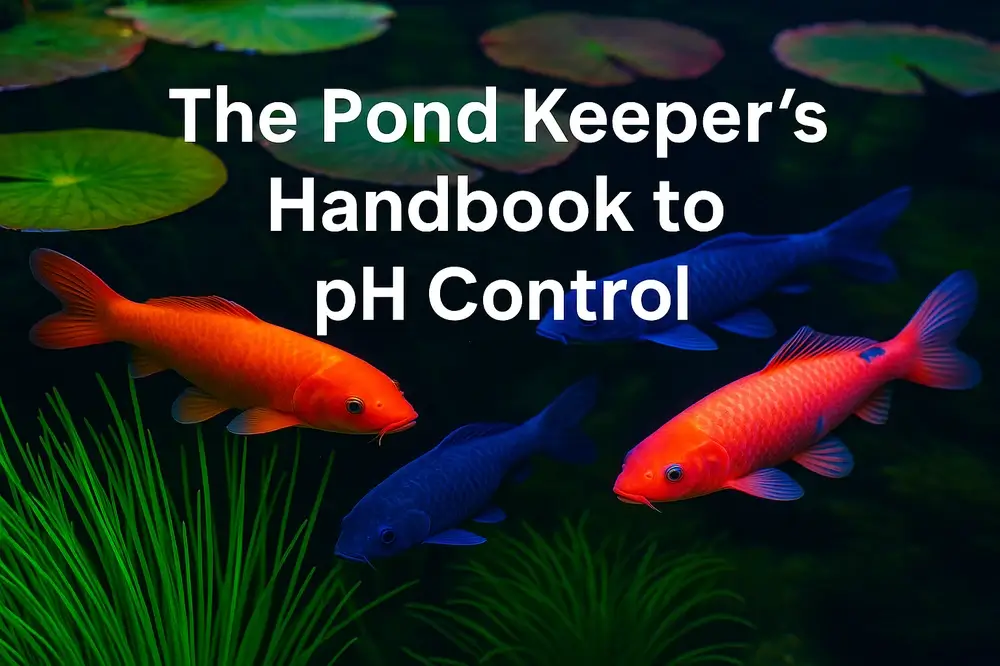The Pond Keeper’s Handbook to pH Control
Keeping a pond can be a fulfilling experience, providing a serene oasis in your backyard. However, one of the crucial factors that determine the health and well-being of your pond ecosystem is the water’s pH level. In this comprehensive guide, we will delve into the significance of pH management in pond keeping and provide you with essential tips and strategies to maintain optimal pH levels for your aquatic habitat.
What is pH and Why is it Important in Pond Keeping?

pH is a measure of the acidity or alkalinity of water on a scale of 0 to 14, with 7 being neutral. In a pond environment, pH plays a vital role in the overall health of aquatic plants, fish, and beneficial bacteria. Fluctuations in pH levels can have a significant impact on the well-being of your pond inhabitants and the overall ecosystem balance.
Common Causes of pH Fluctuations in Ponds
There are several factors that can contribute to fluctuations in pH levels in ponds. Some of the common causes include:
- Decaying organic matter
- Runoff from fertilizers or pesticides
- Presence of fish waste
- Algae blooms
- Introduction of new plants or fish
Impact of pH Imbalance on Pond Life
When the pH levels in your pond deviate from the ideal range (typically between 6.5 and 8.5), it can have detrimental effects on the aquatic life. For example, acidic water can stress fish, inhibit plant growth, and disrupt the activity of beneficial bacteria. On the other hand, alkaline water can lead to nutrient deficiencies and impact the overall water quality.
Maintaining Optimal pH Levels in Your Pond
To ensure a healthy pond ecosystem, it is essential to monitor and regulate the pH levels regularly. Here are some tips for maintaining optimal pH levels in your pond:

- Invest in a high-quality pH testing kit to monitor water parameters accurately.
- Adjust pH levels gradually using pH buffers or additives to avoid shocking the pond inhabitants.
- Implement regular water changes to dilute any accumulated acids or alkaline substances.
- Ensure proper aeration to prevent pH fluctuations caused by lack of oxygen.
- Choose pond plants that can help stabilise pH levels naturally, such as hornwort or anacharis.
The Role of Buffering Capacity in pH Stability
Buffering capacity refers to the ability of water to resist changes in pH levels. Ponds with high buffering capacity are more stable and less susceptible to pH fluctuations. You can enhance the buffering capacity of your pond by adding substances like crushed coral, limestone, or baking soda.
Related Articles:
- How to Make Your Koi Grow Faster and More Colourful
- Blanket Weed in Your Pond? Here’s Why…
- Do I Need a Filter on My Pond? Everything You Need To Know!
Advanced Techniques for pH Optimisation
For pond enthusiasts looking to fine-tune their pH management strategies, advanced techniques such as the use of CO2 injection systems or automated pH controllers can provide precise control over water parameters. These sophisticated tools can help maintain a stable and optimal pH level in your pond, promoting the health and vitality of your aquatic ecosystem.
Conclusion
Proper pH management is a fundamental aspect of pond keeping that should not be overlooked. By understanding the importance of pH levels, identifying potential causes of fluctuations, and implementing effective strategies for maintaining optimal pH balance, you can create a thriving and harmonious aquatic environment for your pond inhabitants. Remember, a balanced pH is the key to a healthy and vibrant pond ecosystem!








